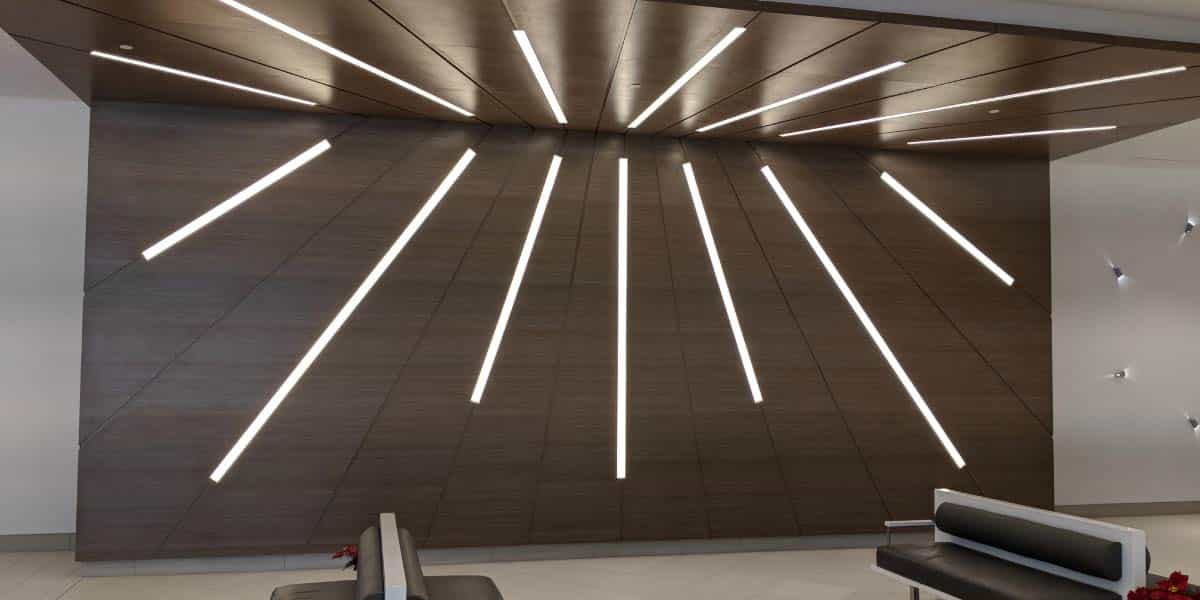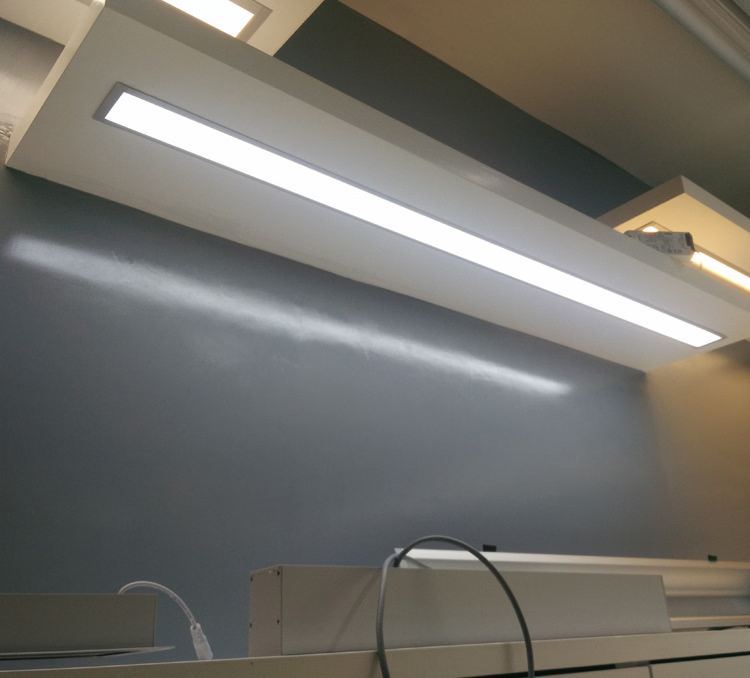Lighting is a big part of our daily lives. It helps us see, makes spaces look nice, and sets the mood. These days, most homes and offices go for LED lights. They’re bright, last forever, and save energy. If you’re curious about indoor LED lighting systems, you’re in the right spot. I’ll break it down. What they are, how they work, and where you can use them.
What Exactly Are Indoor LED Lighting Systems?

Indoor LED lighting systems are lights that run on LED technology. LED means Light Emitting Diode. It’s a tiny chip that glows when electricity flows through it. Unlike old bulbs, LEDs are more efficient. They use less power and last way longer.
LED lights come in all shapes and sizes. Some are small dots. Others are long, flat strips or panels. They are popular in homes, offices, shops, you name it. These systems are loved because they save energy and don’t heat up much.
And if you want to see the best of both worlds, check out LED Linear Indoor lights. They’re perfect for ceilings and long hallways. Oh, and if you’re into decorative lighting, LED Candle lights are a cozy option.
Why Pick LED Lighting for Inside?
There are tons of reasons to go with LED lights indoors. Let me list a few:
- Save Money: They use less electricity. That means smaller bills.
- Last a Long Time: Sometimes up to 25,000 hours or more. Less fuss replacing bulbs.
- Really Bright: LED lights give off clear, crisp light. Your rooms look great.
- Super Flexible: Lots of styles. You can find something for every room.
- Better for Earth: Less energy, less waste, good for the planet.
- Cool to Touch: They don’t get hot like old bulbs. Safer and safer.
How Do These Indoor LED Systems Actually Work?
LED lights are pretty clever. They don’t heat up like the old bulbs do. Instead, they produce light through something called electroluminescence. Fancy word, but simple idea.
Here’s the quick version:
- Flip the switch: Electricity flows into the LED.
- Light happens: That tiny chip inside starts to glow.
- Light shines out: That’s what makes your room bright.
But it’s not just a bulb. LED systems include other parts:
- Power Supply: Converts the power so LEDs can use it.
- Control Units: Let you dim lights or change colors.
- Fixtures: The parts that hold the LEDs in place.
Different Styles of Indoor LED Lights
There are plenty of options. Here are some common ones:
Recessed LED Lights
These sit flush in your ceiling. They give a clean, modern look. Good for general lighting.
LED Panel Lights
Flat panels that hang or mount on ceilings. They spread light evenly, making rooms look uniform.
LED Strip Lights
Flexible strips packed with tiny LEDs. Use them under cabinets, along shelves, or for cool decorative effects.
Track Lighting
Lights attached to a track so you can move and aim them. Perfect for highlighting artwork or specific spots.
Pendant Lights
Hanging fixtures that add style. Great over tables or counters to create focus and ambiance.
Places You’ll See Indoor LED Systems
LEDs are everywhere indoors. Here’s where they really shine:
Homes
Living rooms, bedrooms, kitchens, even bathrooms. They make your space cozy or modern. Use them as main lights or accents.
Offices
Ceilings, conference rooms, reception areas. Keeps workers alert and saves energy too.
Shops
Display cases, shelves, showcase lighting. Makes products look appealing and pulls customers in.
Hotels and Restaurants
Creates a warm, welcoming vibe. Highlights key areas or adds a touch of class.
Healthcare Places
Hospitals, clinics, care homes. Bright, reliable lighting helps keep things safe and clear.
Why Use Indoor LED Systems? Benefits Galore!
Switching to LED lighting? Good idea. Here’s why:
- Save Money: Less energy means smaller bills.
- Lasts Long: No need to change bulbs often.
- Looks Great: Bright, clear light improves the vibe.
- Design Options: Different styles and colors for any mood.
- Good for Planet: Less waste, less energy used.
- Stay Cool: No hot bulbs here. Safer and more comfortable.
Picking the Perfect Indoor LED Lights
So, how do you choose? Here are some tips:
Brightness
Check the lumens. More lumens mean brighter light. For most rooms, 1,500–3,000 lumens work well.
Color Temperature
Measured in Kelvins (K).
- Warm (2700K–3000K): Cozy, yellowish glow.
- Neutral (3500K–4100K): Balanced, good for workspaces.
- Cool (5000K–6500K): Bright white, clean look.
Power Use
Wattage tells you how much energy it consumes. Lower wattage for same brightness means more savings.
Style and Size
Pick fixtures that match your decor. Make sure they fit your space.
Installing Indoor LED Lights
Putting in LED lights isn’t hard. But a few tips:
- Plan First: Know where each light goes.
- Use the Right Fixtures: Match the style and purpose.
- Safety First: Turn off power before installing.
- Ask a Pro: If wiring is tricky, call an expert.
Keeping Your LED Lights in Good Shape
LEDs are pretty low maintenance. Still, a few tips:
- Clean Them: Wipe with a soft cloth once in a while.
- Avoid Moisture: Keep them dry, especially in bathrooms.
- Check Connections: Make sure wires stay tight.
- Replace When Needed: If flickering or dimming, swap them out.
The Future of Indoor LED Lighting
LED tech keeps getting better. Soon, we’ll see:
- Smart Controls: Change brightness and colors with apps.
- Human-Centric Lighting: Mimics natural daylight to boost mood.
- Better Energy Management: Save even more power.
Indoor LED lighting is here to stay. It makes spaces brighter, safer, and more stylish.
Wrapping It Up
Indoor LED systems are a game changer. They save you money, look good, and last long. Whether for your home, office, or shop, LEDs are versatile and reliable. If you want a sleek, modern look, check out [LED Linear Indoor] lights. They’re perfect for ceilings and long hallways. Want cozy, warm lighting? LED Candle lights are a nice choice. They add charm and warmth to any room.
Remember, good lighting makes a difference. Pick the right lights, install them carefully, and enjoy all the benefits LED offers. It’s a smart move for today and tomorrow.
If you need help or want to learn more about options, just ask. Happy lighting!

